Pictures and texts help you understand the gears of the reducer
Gears are mechanical parts with teeth that can mesh with each other. They are widely used in mechanical transmission and entire machinery. There are many types of gears, and the most common classification method is based on the gear axis. Generally divided into three types: parallel axes, intersecting axes and staggered axes. Parallel shaft gears include spur gears, helical gears, internal gears, racks and helical racks, etc. Intersecting axis gears include straight bevel gears, spiral bevel gears, zero-degree bevel gears, etc. Staggered-axis gears include staggered-axis helical gears, worm gears, hypoid gears, etc.
Classification of commonly used gears
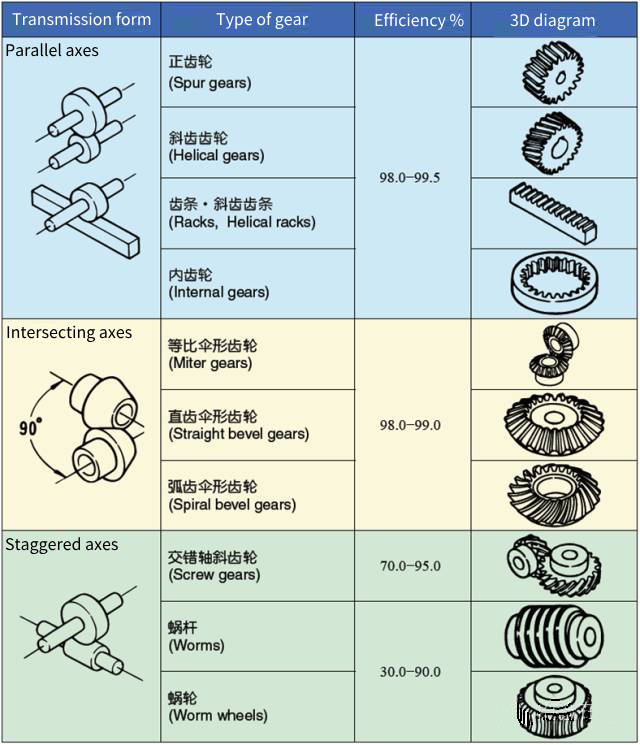
Spur gears
Cylindrical gears with tooth lines parallel to the axis line. They are most widely used in power transmission because they are easy to process.
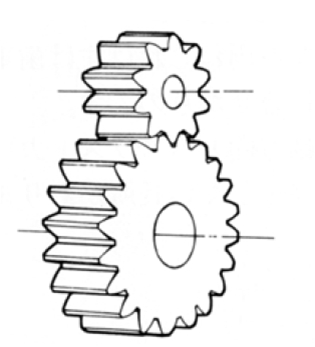
Racks
A linear rack gear meshing with a spur gear. It can be considered as a special case where the pitch diameter of the spur gear becomes infinite.
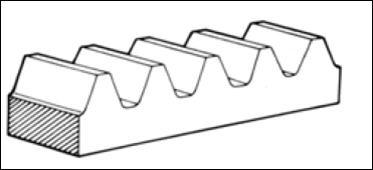
Internal gears
A gear with teeth machined on the inner side of a ring that meshes with a spur gear. Mainly used in applications such as planetary gear transmissions and gear couplings.

Helical gears
A cylindrical gear with a helical tooth line. It is widely used because it is stronger than a spur gear and runs smoothly. It generates axial thrust during transmission.

Helical racks
A strip gear meshing with a helical gear. This is equivalent to the situation where the pitch diameter of the helical gear becomes infinite.

Herringbone gears
The tooth line is a gear composed of two helical gears with left-handed and right-handed teeth. It has the advantage of not generating thrust in the axial direction.

Spur bevel gears
The bevel gear whose tooth line is consistent with the generatrix of the pitch cone line. Among bevel gears, it is a relatively easy type to manufacture. Therefore, it is widely used as a transmission bevel gear.

Spiral bevel gears
Bevel gears have curved teeth with a helical angle. Although they are more difficult to manufacture than straight bevel gears, they are widely used as high-strength, low-noise gears.
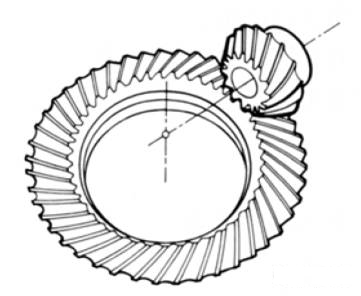
Zero degree bevel gears
A curved bevel gear with a helix angle of zero. Because it has the characteristics of both straight and curved bevel gears, the force on the tooth surface is the same as that on a straight bevel gear.
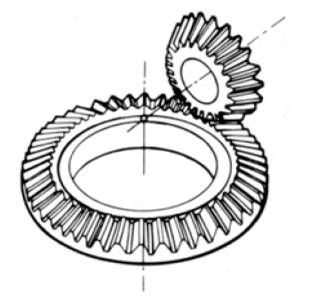
Cylindrical worm gears
The cylindrical worm pair is the general name for the cylindrical worm and the worm wheel that meshes with it. Its biggest features are quiet operation and a single pair can achieve a large transmission ratio, but it has the disadvantage of low efficiency.
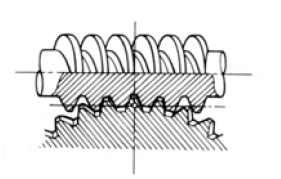
Staggered helical gears
The name of a cylindrical worm gear when it is used to drive between staggered shafts. It can be used in the case of a helical gear pair or a helical gear and spur gear pair. Although it runs smoothly, it is only suitable for use under light loads.

Face gears
A disc-shaped gear that can mesh with a spur gear or a helical gear. It transmits power between right-angled and staggered axes.
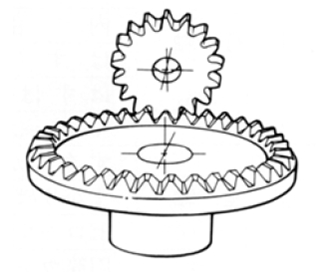
Drum worm gears
A general term for a drum-shaped worm and the worm wheel that meshes with it. Although it is more difficult to manufacture, it can transmit larger loads than a cylindrical worm pair.

Hypoid gears
Conical gears that drive between staggered shafts. The large and small gears are eccentrically processed, similar to spiral gears, and the meshing principle is very complex.

